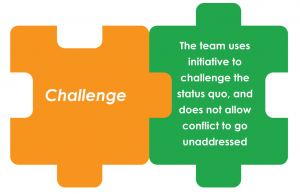Cricket: Leadership, teamwork and relationships
Team leadership lessons we learn from cricket to build stronger client-agency relationships.
Cricket is a peculiar game.
Among its many features, it is really the only team game in which the role of the on-field captain is more critical and hands-on throughout the play. The captain makes all the on-field decisions, takes all the calls (perhaps with some words in his ear occasionally), and is the General marshalling his forces to implement his strategy and plans, which may need to change any minute depending on the action which is taking place.
The irony is that cricket is also perhaps the only team game in which there is really no ‘organic’ or ‘fluid’ relationship between the players on the field, unlike say soccer or hockey or basketball. Each ball bowled is a separate event, requiring a separate response from the batting and bowling team players.
Individual vs the team
It is the most ‘individual’ of all team sports, where individual performances and records play such an important role in the iconography of the person involved. Think ‘a hundred international hundreds’, or ‘500 wickets’ attached to player’s CV; think the ‘Honours Board’ at Lord’s, where individual feats like centuries and 5-wicket hauls are displayed for posterity, and you will understand the importance to the individual of personal achievements.
And yet, like in any other sport or field of human endeavour, positive player relationships, teamwork and solid team leadership are essential for success. The role of the captain in engendering positivity, in motivating each individual, whose role within the team is specific and specialised, and in getting the individual to think ‘team first’ is pivotal. There are numerous instances where the ‘best’ player on the team (think Sachin Tendulkar) were spectacularly unsuccessful in getting the best out of his team and going on to lose most games he captained, having to finally, and a trifle ignominiously, relinquish his captaincy. In the 98 matches that Tendulkar was captain, the team won only 27 games.
Then think Mike Brearley, not by a long shot the best batsman or player in the England team. His record in Test cricket as a batsman was modest (he averaged 22.88 in 66 Test innings, without a century), but he was an outstanding captain. He captained the international side in 31 of his 39 Test matches, winning 17 and losing only 4.
His team leadership skills (he was once described by Rodney Hogg as having “a degree in people”) drew the best from the players in his team. His greatest triumph was in 1981. Having passed the England captaincy to Ian Botham in 1980 (losing his Test place in the process), Brearley returned as captain following Botham’s resignation for the third Test against Australia at Headingley in 1981, going on to win the match and two of the remaining three matches of the series to win the Ashes 3–1, the famous ‘Phoenix from the Ashes’ series, where ironically, Botham was the hero after his winless captaincy record.
Why leaders fail teams
So here are two examples of captains who led, as it were, from the rear, and two captains who were personally iconic characters, but who did not succeed in captaincy. I am sure you can work out the reasons for this dramatic difference, but here are some that occurred to me:
- Pursuing personal records
- Not accessible enough
- Not being able to understand and then help the less naturally gifted
- Revelling in the aura of superstardom
Let’s look at a current captain, much in the news, a superstar of global note, with over 130 million followers on each of the social media platforms. He remains the only Indian in the Forbes’ list of world’s highest-paid athletes with total earnings of USD 26 million in 2020, jumping to the 66th spot from 100 in the 2020 standings.
Notwithstanding his necessary (as an Indian captain who wields incredible influence in the country), strong, eloquent and whole-hearted support for his teammate Mohammed Shami, who was vilified and trolled in the most repulsive manner after India lost to arch-rivals Pakistan in the T20 World Cup, Kohli’s captaincy record is tenuous. For example, he could not lead his team to win any ICC tournament, the real measure of ‘world’ success.
This despite the backing of the richest Board (by far), and the largest pool of players anywhere.
There is a lesson to be learnt here.
Lessons for business
Why I cite these instances is because cricket is in many ways similar to the corporate world, where relationships are largely inorganic, and yet play a crucial role in determining the success of the company.
This is even more so in the ‘people-driven’ businesses such as marcomm, where an ad or television commercial is often attributed to one or two people but is actually the end result of perhaps as many as 100 people providing their direction, thinking, suggestions, production skills and ground logistics (for example a film production unit).
As in cricket, the role of team leadership is central to the performance of the company. Specifically when it comes to client-agency relationships, the teams take their cue from the behaviour and attitude of the leaders.
Let’s address the client or marketer leadership first (the client always comes first!).
Do they sign off on the brief and then stick by it?
Do they play the master-servant card?
Do they come in only at the end of the campaign development process and then play god?
Do they refer to the agency in disrespectful terms?
Or do they treat the agency members with the respect due to professionals? Give them a seat at the high table, so to speak, at client functions. My mind goes back to one of our largest and oldest clients when I was working in their agency: our team members were given pride of place in all functions, and the agency head was seated at the CEO’s table throughout. Nothing could have signalled the equality of the relationship more than these public gestures.
“We would have walked over broken glass for them”
Equality is critical
Though demands on the leadership at the agency are similar in many ways, there is one crucial difference: to stand up for your team against a client who bullies, browbeats, keeps your people waiting for hours and regularly threatens to take away his business, requires both fortitude and determination…and self-respect.
If your team sees you bowing and scraping at the most ridiculous demands from a client, patently cases of seeing how low you’ll bend or high you’ll jump just to keep the business, it is the thin end of the wedge. When a leader sacrifices his (and by definition his team’s) self-respect at the altar of ‘business’, then he/she has no right to be the leader.
Courage. Dignity. Integrity. Respect.
Agency people must also believe that they are professionals as good as their marketing counterparts and will be treated as such. If not, the rots sets in and then is very difficult to eradicate.
An agency head would have hired and fired many employees, taken numerous decisions that impacted their future and that of the agency, and of course the brands the agency worked on, but ask anyone how many clients they requested to take away their business, and they will look at you with horror. It is the agency’s lasting nightmare…losing a client.
And yet, if the client is cancerous, it is imperative to bite the bullet (pardon the mix of metaphors). I have done it twice (with full knowledge of my team members), and both times the clients continued with us, and now, at time of writing, well over 20-30 years later, continue to be with the agency with which I was fortunate enough to work.
Perhaps this is the most important requirement of team leadership, which engenders teamwork and enhances positive relationships: tough but fair, respect and self-respect, take the hard decisions when needed, no politics, and stand behind your people…but if they are in the wrong, to admit it and take it on the chin.
The growing importance of challenging norms
At Aprais, we segment team evaluations into functional disciplines and behaviours. Disciplines change according to the different demands of each role while behaviours are common and allow us to compare different business teams.
Analysis of our database of 24,000 client-agency evaluations show that the Challenge scores have improved substantially for top and bottom performing clients and agencies, in the decade since 2010.
This suggests clients are more prepared to change processes, resolve issues and take risks than they were a decade ago. Equally, agencies feel empowered to Challenge traditional processes and solutions and think more laterally.

I can’t ever forget this one dialogue from Peter O’Toole in the film Lawrence of Arabia. In one scene he extinguishes a matchstick flame with his fingers, and he is asked, ‘Doesn’t that hurt?’, and his reply was, ‘The secret, Corporal Potter, is in not minding when it hurts.’
It doesn’t come easy, but then who said leadership is a bed of roses? After all, roses do have thorns. The idea is to enjoy the ride, and help others enjoy it too.





 Posted On July 8 2025
Posted On July 8 2025